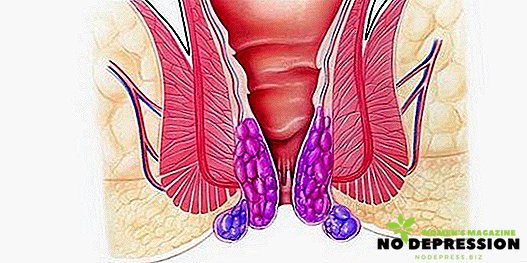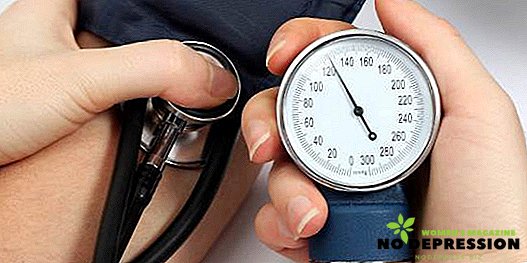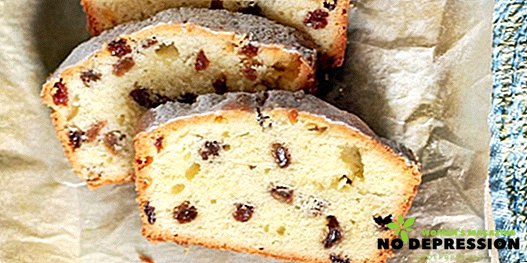A sparing diet with elevated blood sugar is a prerequisite for normalizing the condition. If the patient does not want to take medicine in the future, you will have to eat right and exercise regularly. A variety of recipes for dishes with low GI make it easy to switch to a new meal.

What is the danger of increasing blood sugar levels?
Blood sugar levels in healthy people range from 3-3.5 to 5.9 mmol / l. Its increase can be caused by various reasons, such as pregnancy, stress, serious illnesses. In such cases, the sugar level returns to normal after eliminating the cause. But even a slight increase in the level of sugar is a reason to contact a specialist to check the state of the pancreas.
You also need to revise your diet, because in this case, the diet is often the only way to normalize glucose levels. A rise in sugar levels above 5.9 mmol / l signals hyperglycemia. If this indicator exceeds 7 mmol / l, then we can already speak about the presence of diabetes.
Often, elevated glucose levels are observed in women over 50 years of age, for this reason they are recommended to visit an endocrinologist at least once a year to prevent development and timely diagnose diabetes.
Dietary nutrition will help prevent the development of this pathology and associated diseases, normalize weight, which increases due to hyperglycemia.
In addition to changes in the diet with an increase in sugar, you must give up alcohol, smoking, begin to lead a physically active lifestyle. True, such classes are held only after normalization of glucose levels. A healthy lifestyle and a special diet are beneficial for everyone, since their combination will ensure weight is normal, will help reduce the level of "bad" cholesterol and normalize the work of the gastrointestinal tract.
You should also pay attention to the following symptoms, which may indicate an increase in glucose level:
 thirst;
thirst;- dry mouth;
- frequent urination;
- decreased performance;
- lethargy;
- weakness;
- fatigue;
- increased appetite;
- slow healing of injuries, wounds;
- the appearance of furuncles;
- itching of the mucous membranes and skin;
- reduced immunity.
Some general important recommendations
First of all, eliminate from the diet foods that increase the level of glucose in the blood, limiting the amount of incoming carbohydrates. It is also necessary to reduce the total caloric intake. It should not exceed 1800 kcal. Follow the diet, do not forget about the support of water balance, take care of sufficient intake of vitamins and minerals. Also, with this pathology it is necessary to monitor the ratio of proteins, carbohydrates and fats. Their optimal combination is 20, 45, 35%, respectively.
Diet at an elevated glucose level also requires compliance with the drinking regime. Thus, you need to drink at least 2.5 liters of water per day. The methods of cooking are important, because with hyperglycemia in humans, the predisposition to a blockage of blood vessels increases, which can provoke an excessive content of "bad" cholesterol in the blood.
Food for this disease should be regular, fractional, divided into at least 5 small portions for reception during the day. It is necessary to start eating only after a feeling of hunger appears, when the feeling of satiety comes, you must stop eating, which will prevent overeating.
Those who are accustomed to eat a lot, it is advisable to drink a glass of water before meals, this will partially fill the stomach and speed up saturation.
What is possible and what is not possible with elevated sugar?
Vegetables
It is recommended to limit the use of vegetables with a high glycemic index: potatoes and beets. Prefer fresh, baked or boiled vegetables. And do not forget, before drawing up the weekly menu, to clarify their glycemic index. Without restrictions, you can eat the following vegetables: zucchini, pumpkin, eggplant, cabbage, tomatoes, cucumbers, lettuce, onions, greens.
Fruits and berries
It is preferable to choose unsweetened varieties. And to diversify food, prepare refreshments, compotes, fruit drinks, lemonades. Only bananas, grapes, raisins, figs and melons are restricted. It is necessary to completely eliminate dates, because their glycemic index is 109 units. It is allowed to eat most citrus fruits, for example, oranges, tangerines, grapefruits, as well as apples, plums, nectarines, peaches.
From the berries you can eat garden and forest, such as strawberries, raspberries, currants, blueberries, cherries and cherries. Overripe fruits have much more calories, so they are recommended to be discarded.
Meat and fish
With an increased level of sugar in the blood is best to eat lean meats. For this fit turkey, rabbit, beef, chicken. When cooking, remove excess fat and skin. You can dilute the diet with offal, such as liver, tongue, hearts. But the following types of meat are prohibited: fatty pork and beef, wieners, sausages and so on.
 To reduce blood sugar, add seafood and lean fish to your diet:
To reduce blood sugar, add seafood and lean fish to your diet:
- cod;
- pike;
- carp.
Squids and shrimps can be used for cooking as a stand-alone meal, and salads. You cannot fry meat and fish, but boiled and baked dishes from them are healthy and nutritious.
Milk and dairy products
With a high level of sugar in the blood from the diet should be excluded fatty dairy products: cream, sour cream, margarine, fatty milk, yellow cheese. These products are useful for pregnant women and children, so they can be eaten only in small quantities. But low-fat kefir, cheese, low-fat cottage cheese, savory yogurt can be used at any time of the day. The main thing is to comply with the serving size.
Barley porridge and other cereals
Cereals are a useful source of fiber and complex carbohydrates. They should form the basis of the diet, since they are easy to prepare, saturate the body well, are accessible to people with different incomes. The following types of cereals are necessary for the normalization of sugar:
- barley;
- oatmeal;
- buckwheat
- millet;
- wheat.
You can not consume semolina, as well as white rice varieties. It is also necessary to abandon instant cereals and muesli, and all because they add sweeteners and preservatives.
First meal
With a high level of glucose, you should abandon the use of fatty soups in meat broth. Any first courses with this pathology are prepared without adding meat.
Other food
As a dessert, you can make berry mousse without sugar, sorbitol, jelly sweets. You can also consume: bran rye bread, boiled eggs. But the shop sauces, fast food, mayonnaise and any products that include white flour, adversely affect the level of glucose and increase it. Also, with this pathology, it is impossible to include in the diet of bread, candy, candy bars, cakes, and so on.
Sample menu for the week
To lower blood sugar levels, you need to control the portion size:
- stewed vegetables, sliced vegetables, vegetable puree - up to 150 g;
- first dish - up to 250 g;
- fish or meat products - about 70 g;
- bread - no more than one piece;
- liquid - one glass.
Breakfast options:
- oatmeal on the water and grated carrots;
- buckwheat and boiled egg;
- low-fat cottage cheese with peach;
- tomatoes with fish cutlet;
- barley with vegetables and white cheese;
- steam omelet with mushrooms and vegetable salad;
- steamed oatmeal, apricots and a glass of kefir for the night.

The first snack: apple, cottage cheese, kefir, vegetable sliced, orange.
Dinner:
- pickle and baked beef, cabbage salad;
- borscht and steam cutlet, cucumber and pea salad;
- cabbage and stewed cabbage with chicken fillet;
- mushroom soup and seafood salad, steam fish;
- grilled pea soup and vegetables with turkey;
- bean soup and tomato salad;
- stuffed peppers and cucumber and tomato salad;
- zucchini soup and potato casserole, carrot salad.
Lunch: fruit salad, yogurt without sugar, berries, walnuts, pear, curd casserole.
Dinner:
- omelet with vegetables and baked fillet;
- turkey cutlets and vegetable slices;
- zucchini casserole and steamed beef patties;
- grilled fish and baked peppers;
- pumpkin porridge with cutlet and salad;
- seafood kebab, tomatoes and white cheese;
- a piece of boiled beef and green salad.
Diet and pregnancy
If a pregnant woman has increased sugar levels, she needs to carefully monitor the frequency of food intake. You can not skip meals because it can negatively affect not only her health, but also the health of the child. In this condition, you must regularly monitor the level of glucose in the blood. This will help special devices that are sold in pharmacies. One drop of blood is enough to determine the index.
The main thing is to take blood on an empty stomach. Meals in the period of carrying a child should be lean, with a low content of salt, oil and spices. Also, a diet for pregnant women with an increased level of sugar should not contain many calories and still be nutritious. The first meal is good to start with foods that contain dietary fiber, such as cereal, vegetables, whole grain bread.
When cooking meat dishes it is necessary to remove visible fat. During the day you need to drink at least 2 liters of fluid. It is necessary to abandon margarine, sauces, spicy dishes, strong tea and coffee, cream cheeses.

How to improve blood and cholesterol levels?
To improve the performance of carbohydrate and fat metabolism, it is necessary to reduce or completely eliminate from the diet: alcohol, fatty meats, offal, fatty, smoked, canned fish, caviar, hard cheese with fat content above 40%.
In addition, it is necessary to abandon all products based on sugar and white flour. Any packaged fruit juices, sweet soda, pasta are also unacceptable with high blood sugar.
It is necessary to limit the use of strong coffee, tea, chocolate, cocoa. For the body, elevated levels of sugar and cholesterol do not pass without a trace. Even after its reduction with the help of medicines, any jumps in blood glucose can lead to the destruction of the vascular walls, which will provoke an inflammatory process. Cholesterol is also deposited at the site of injury, forming plaques.
These factors when combined action dramatically increase the likelihood of circulatory disorders, the development of heart disease, such as myocardial ischemia, heart attack, hypertension. Changes in patients with diabetes can occur with complications an order of magnitude more often.
They appear in the following forms:
- severe diabetic neuropathy;
- nephropathy with renal failure;
- brain stroke;
- vision loss;
- diabetic retinopathy.
Prevention of the development of such conditions is in proper nutrition and physical activity.


 thirst;
thirst;









